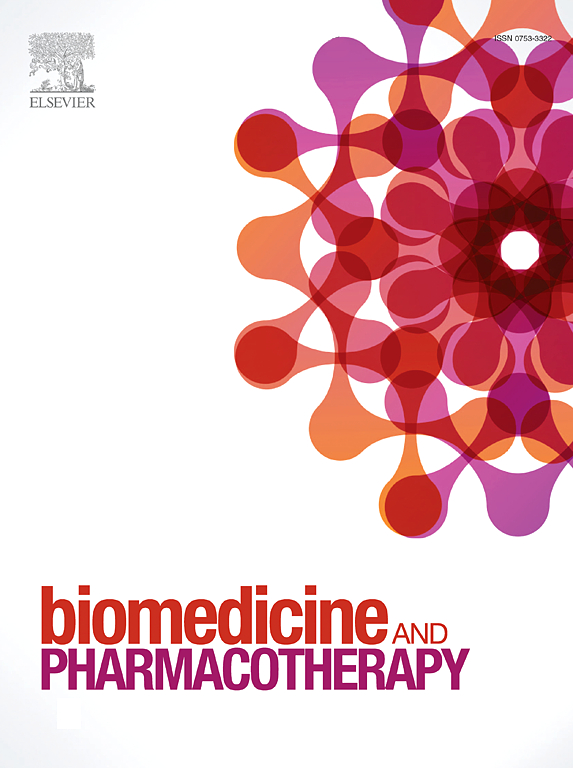Salvia miltiorrhiza activates Nrf2/HO-1 signaling and restores steroidogenesis in Leydig TM3 cells and an aging rat model
IF 6.9
2区 医学
Q1 MEDICINE, RESEARCH & EXPERIMENTAL
引用次数: 0
Abstract
Male aging is often accompanied by a gradual decline in testosterone production, referred to as andropause, which is associated with fatigue, reduced libido, hormonal imbalances, and metabolic disturbances. Testosterone replacement therapy poses risks such as prostate and cardiovascular complications, prompting interest in natural alternatives. This study explored the therapeutic effects of Salvia miltiorrhiza extract (SME) in an in vitro H₂O₂-induced Leydig TM3 cell model and an in vivo aged rat model. HPLC/MS analysis confirmed the presence of tanshinone IIA (10.629 mg/g) in SME. SME (1–2 μg/mL) attenuated oxidative stress, restored antioxidant gene and protein expression (Nrf2, HO-1, SOD, CAT, and GPx), and enhanced the steroidogenic pathway by upregulating STAR, CYP11A1, CYP17A1, 3β-HSD, and 17β-HSD while downregulating 5α-reductase. In aged rats, oral administration of SME (particularly 50 mg/kg) restored testosterone, LH, FSH, and progesterone levels, while reducing SHBG and DHT levels. SME also improved liver function markers (ALT and AST) and lipid profiles (TG, TC, LDL, and HDL), and reduced MDA and serum PSA levels. Also, HPLC/MS analysis detected the presence of tanshinone IIA in the serum of SME-administered animals. Furthermore, fecal microbiome analysis revealed an abundance of the propionate-producing microbe Succinispira mobilis, indicating a possible role of SME in improving gut health and hormone levels. These findings suggest that SME may serve as a promising natural intervention against andropause by regulating oxidative stress, steroidogenesis, and gut dysbiosis.
丹参激活Nrf2/HO-1信号通路,恢复Leydig TM3细胞和衰老大鼠模型中的类固醇生成
男性衰老通常伴随着睾丸激素分泌的逐渐下降,被称为男性更年期,这与疲劳、性欲下降、荷尔蒙失衡和代谢紊乱有关。睾酮替代疗法存在前列腺和心血管并发症等风险,促使人们对天然替代品产生兴趣。本研究探讨丹参提取物(SME)对体外H₂O₂诱导的Leydig TM3细胞模型和体内衰老大鼠模型的治疗作用。HPLC/MS分析证实丹参酮IIA含量为10.629 mg/g。SME(1-2 μg/mL)通过上调STAR、CYP11A1、CYP17A1、3β-HSD、17β-HSD,下调5α-还原酶,减轻氧化应激,恢复抗氧化基因和蛋白(Nrf2、HO-1、SOD、CAT、GPx)表达,增强甾体生成途径。在老年大鼠中,口服SME(特别是50 mg/kg)可恢复睾酮、LH、FSH和孕酮水平,同时降低SHBG和DHT水平。SME还能改善肝功能指标(ALT和AST)和脂质谱(TG、TC、LDL和HDL),降低MDA和血清PSA水平。同时,HPLC/MS检测到丹参酮IIA在给药动物血清中的存在。此外,粪便微生物组分析显示,产丙酸的微生物琥珀酸菌(Succinispira mobilis)丰富,表明SME可能在改善肠道健康和激素水平方面发挥作用。这些发现表明,SME可能通过调节氧化应激、类固醇生成和肠道生态失调,作为一种有希望的自然干预措施来对抗男性更年期。
本文章由计算机程序翻译,如有差异,请以英文原文为准。
求助全文
约1分钟内获得全文
求助全文
来源期刊
CiteScore
11.90
自引率
2.70%
发文量
1621
审稿时长
48 days
期刊介绍:
Biomedicine & Pharmacotherapy stands as a multidisciplinary journal, presenting a spectrum of original research reports, reviews, and communications in the realms of clinical and basic medicine, as well as pharmacology. The journal spans various fields, including Cancer, Nutriceutics, Neurodegenerative, Cardiac, and Infectious Diseases.

 求助内容:
求助内容: 应助结果提醒方式:
应助结果提醒方式:


